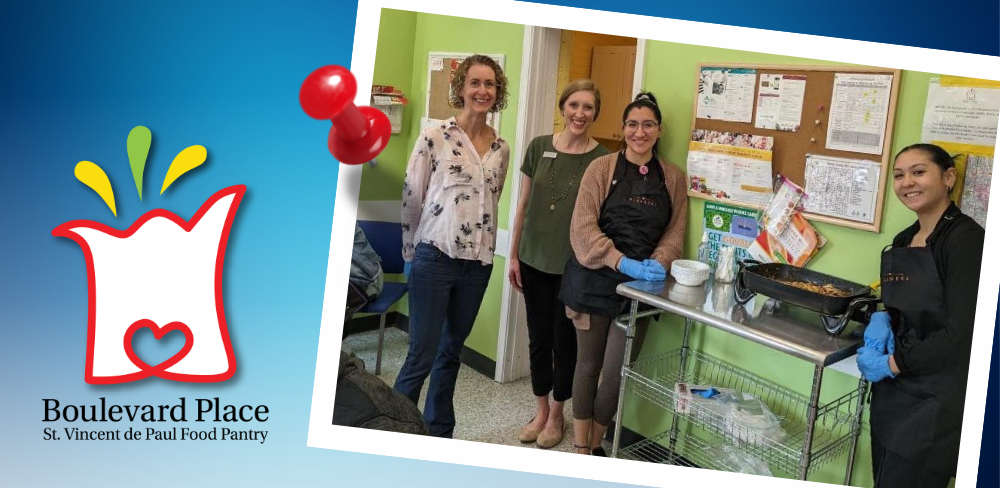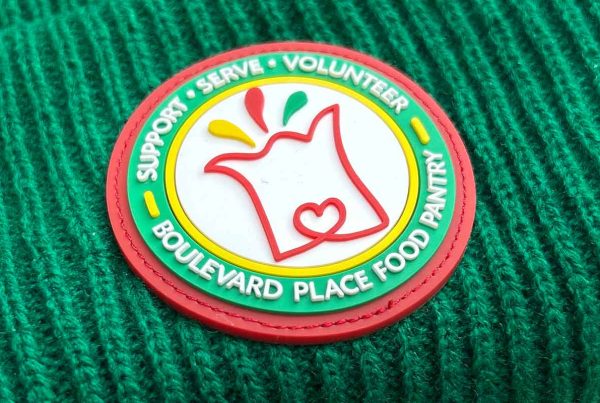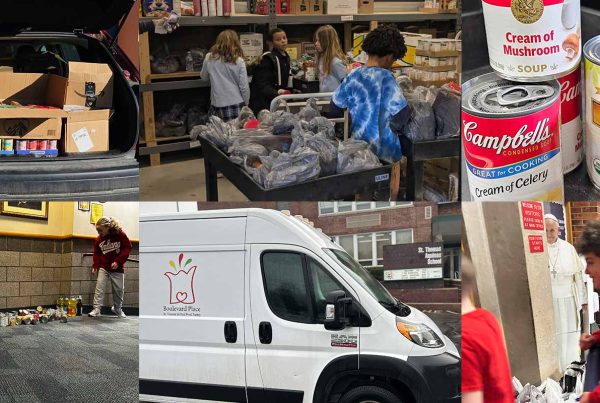By Tom Spalding
Clients are benefiting from helpful new ways to shop at the Food Pantry that should pay dividends in their diets.
It’s all about expanding the types of resources the pantry provides that focuses on people-powered service.
As you may know, much of Boulevard Place’s inventory is made up of basic essentials – frozen meats, from-the-garden vegetables, canned or fresh fruits, and name-brand milk. While some offerings can be enjoyed “as-is” a lot of the items require cooking or some type of preparation; not all are ready-to-eat or heat-and-serve.
(Those who come for a meal we happily introduce them to the Indy Hunger Community Compass app.)
For example, Boulevard Place Food Pantry volunteers are known to occasionally tape a note onto the shelves in the client shopping area to suggest or recommend potential menu pairing possibilities they might not have considered (such as sloppy joes).
Recently, Pantry Director Matt Hayes began to expand upon that idea, prompted by another volunteer who is also a registered dietitian. Hayes will produce the “incoming/purchased” list of food that we know we’ll be receiving from one of our pantry partners and/or the government via TEFAP our commodity food made available to us by the U.S. Department of Agriculture (USDA) to States.
With the list in hand from what’s available, Pantry volunteer Melissa Greives, a registered dietician:faculty member with Indiana University-Bloomington at the School of Public Health, craftily creates recipes that Hayes and/or the team prints out and leaves for clients at the front counter. Her recent recipe suggestions included “scrambled eggs, bean and brown rice” and “spinach and quinoa salad” and “baked barbecue chicken and green beans.” Clients observably beamed with appreciation over the recommendations. Hayes calls them “recipe magic.”
Another way this approach of going beyond-just-giving-out food out occurred in May.
Sarah Wilson, RDN, is nutrition manager at Gleaners Food Bank of Indiana; their team goal has been working to “Feed the Future” by providing nutritious, culturally responsive foods and nutrition education to the community. On May 18 (see picture) she brought in three dietetic interns, for a food demo.
“I absolutely love that Melissa has been sharing her nutrition expertise and recipe ideas with pantry shoppers, so my goal is to support her amazing work,” Wilson wrote in an email to Hayes.
It helps that we have a small education nook accessible to the client waiting room along with a small sink. It had formally been just a bathroom/storage area.
Our Pantry has also been historically connected with the Purdue Extension Nutrition Education Program. Hayes said he is open to all types of collaboration as long as it results in a bettering of clients’ lives and the Pantry’s reputation.
“We’re trying out several new things and finding partners to work with,” Hayes said. “We want to get the most ‘bang for the buck’ and do more than just hand food; it’s all about resources and the cost is just volunteers’ time.”





